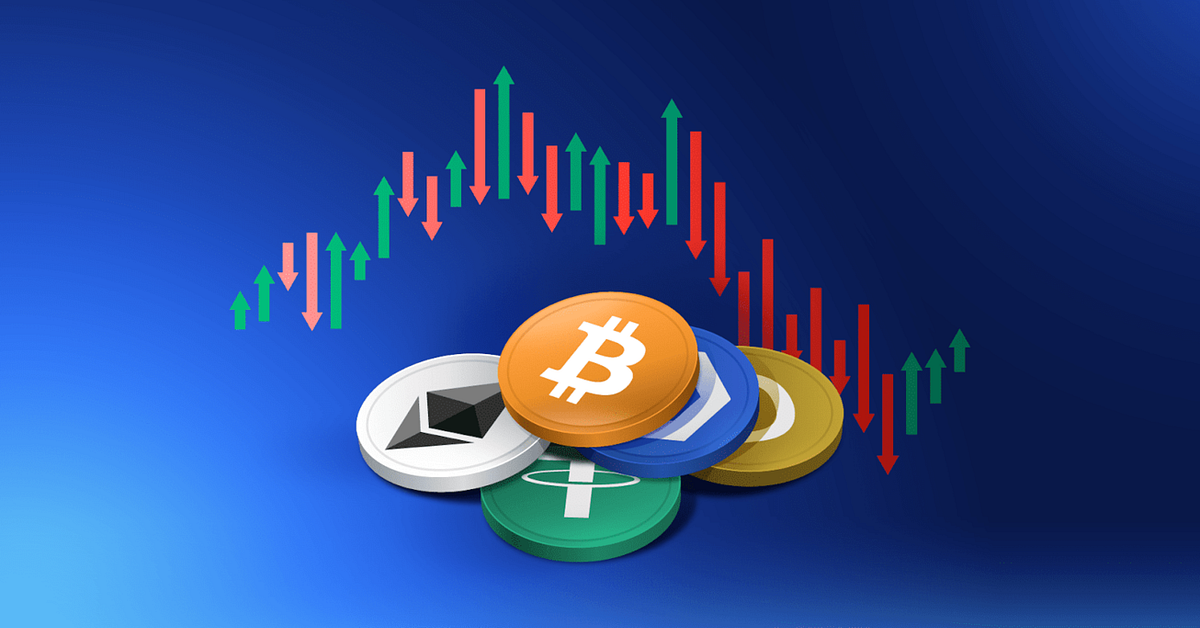Your Guide to the “Bitcoin Flu” that’s catching on everywhere

So, you’ve got dry eyes from screen-staring, a mild paranoia about missing out on something crucial, and an inexplicable urge to ask everyone around the dinner table what they think about money… Not what it buys, not how you plan to spend it, but the concept of it—what, in essence, is this thing we call money?
It’s a fascinating condition. It starts with a bit of casual curiosity, just some light reading here and there, maybe a quick video or a podcast. Next thing you know, you’re watching video after video, scrutinising economic theories, and losing hours to some “white paper” written some 15 years ago. Friends and family start noticing the symptoms — you’re now that person who brings up philosophical discussions about monetary policy at the most unexpected moments.
But fear not; you’re not alone! You’ve very likely caught the infamous Bitcoin Flu. Fortunately, many have gone before you, progressing through The Five Stages of Bitcoin Conviction.
Stage 1: Denier
“Bitcoin? Crypto is a bubble waiting to burst, everyone knows that.”

Deniers dismiss Bitcoin entirely, viewing it as a passing fad or, worse, a scam. They’re certain that if the current financial system exists, it “does so for a reason”, and they don’t see any value in questioning it. Bitcoin, in their minds, is either dangerous or absurd, an unnecessary complication in a world they believe functions just fine.
- Mindset: Deniers believe that if something isn’t broken, there’s no need to fix it. Bitcoin represents a challenge to the financial institutions they trust, and they see no reason to upend the system.
- Response to Bitcoin: “If it’s a good idea, why isn’t everyone using it already?” They dismiss Bitcoin as a fringe obsession, often with a mix of cynicism and frustration toward anyone who advocates for it.
- Dream outcome: If given the chance, they’d likely make Bitcoin vanish with the push of a button.
- Fun Fact: Surprisingly, a high concentration of university-educated economists belong here, quick to tell you “moderate inflation stimulates the economy” — but ask them why, and you’ll likely get a shrug and a “Well… because my schoolbook said so.”
For Deniers, Bitcoin is a mere distraction — and they’re likely to lump it together with all other “cryptocurrencies” or “altcoins.” They’re comfortable with the status quo and uninterested in exploring alternatives, preferring a financial world that looks and operates like the one they know.
Stage 2: Skeptic
“Bitcoin has theoretical potential, but it’s a niche sector.”

Skeptics are a step up from Deniers. They’re aware of Bitcoin’s growing presence and often have moderate understanding of finance, but see it as fragile and peripheral, something unlikely to impact the core of the financial system. To them, Bitcoin’s appeal is overhyped, and they can’t quite understand why others are so passionate about it.
- Mindset: Skeptics see some theoretical potential in Bitcoin but view it as too niche to warrant serious attention. They assume that if Bitcoin ever did become influential, governments would quickly regulate or suppress it.
- Response to Bitcoin: “Maybe there’s something to it, but it’s overblown. Governments will never let it thrive.” They’re skeptical of the hype and focused on regulatory risks.
- Dream outcome: Bitcoin remains legal but controlled or restricted, serving only a niche role without disrupting traditional financial systems.
- Surface-level criticisms: With a very superficial understanding, they’re likely to echo common concerns like “Bitcoin’s energy intensity is bad for the environment” or “the opt-in feature is problematic”, usually based on headlines or snippets from reports rather than any in-depth exploration of these issues.
- Fun Fact: Ironically, many in this category think they’re outperforming the market with 10% gains on their “diversified stock portfolios”, beating CPI by 7%. What they overlook is that money supply is also expanding at 10%, meaning they’re just barely keeping up — or more likely, slowly losing purchasing power.
While they’ve noticed Bitcoin’s growing visibility, Skeptics don’t see it as central to the economy and remain unconvinced by the enthusiasm of its proponents. They hesitate to commit because they view Bitcoin as something peripheral, always on the margins, and thus not worth serious considerations.
Stage 3: Investor
“Bitcoin is like digital gold. Let’s diversify.”

Investors are pragmatists who’ve come to view Bitcoin as a new asset class, a digital hedge against inflation or economic instability. They may not fully grasp Bitcoin’s deeper implications, but they see its potential as an inflation-resistant store of value or “digital gold.”
- Mindset: Bitcoin is an asset, not a revolution. Investors want to diversify their portfolios, and Bitcoin offers the potential for high returns and inflation protection.
- Reaction to the paper fold question: “Interesting! Exponential growth is no joke.” They’re starting to see Bitcoin’s value, and the paper-fold question resonates as a metaphor for Bitcoin’s potential.
- Dream outcome: Bitcoin becomes a stable, established asset class, like gold, with predictable market patterns.
- Mindset: Bitcoin is a promising asset, and investing in it can provide inflation protection and portfolio diversification. Investors don’t view Bitcoin as a system-changing technology but as a potentially profitable addition to traditional assets.
- Response to Bitcoin: “It’s worth holding as a hedge or inflation-resistant asset.” They’re here for the potential gains, not for a revolution.
- Dream outcome: Bitcoin becomes an established asset class, stable enough for portfolios and widely regarded as a hedge like gold.
Investors include funds, portfolio managers, and companies looking to diversify. They’re often interested in Bitcoin purely as a financial asset, viewing it as a tool to hedge against economic uncertainty without fully embracing its ideological implications. Among them are opportunists who see Bitcoin primarily as a way to make a quick buck, overlooking the technology’s broader impact.
Stage 4: Technocrat
“Bitcoin has the potential to disrupt traditional business models and power the future economy.”

Technocrats see Bitcoin as more than an asset — it’s a technological marvel with the potential to reshape industries and society. They’re interested in Bitcoin’s underlying architecture — the blockchain — and see it as a model that could revolutionise finance, decentralise power structures, and create new business opportunities.
- Mindset: Bitcoin is a groundbreaking technology that has the power to transform industries. Technocrats see Bitcoin not just as a digital asset but as a foundation for new business models that could sideline traditional gatekeepers.
- Response to Bitcoin: “Bitcoin is the future of finance.” They’re fascinated by its potential to enable peer-to-peer systems, eliminate middlemen, and reduce friction in transactions.
- Debunking Common Misconceptions: As technocrats invest more time in self-study, they may begin to see common criticisms — such as those voiced by skeptics — not only as mistaken but as entirely reversed. Bitcoin’s energy use, they realise, is a feature, not a flaw.
- Dream outcome: Bitcoin and blockchain technology become the backbone of finance, reducing the need for intermediaries and empowering consumers and producers.
If you’re a Technocrat with a special interest in energy, Bitcoin’s role in green energy liekyl becomes a core attraction. Bitcoin mining, driven by the quest for cheap energy, often captures surplus or otherwise wasted power, making it a “vacuum cleaner” for surplus energy across the globe. Miners flock to places with unused energy from wind or hydroelectric sources, where they can monetize surplus power and incentivise renewable projects. This “natural subsidy” encourages green energy adoption by turning excess energy into profit, creating a market-driven way to fund sustainable energy and, in some cases, support environmental initiatives like conservation in remote areas.
Some opportunistic entrepreneurs also lurk in this category, wielding a surface-level understanding of the technology to preach a decentralised future while subtly using it to bypass regulations. They present themselves as champions of disruption, yet their commitment to decentralisation often runs shallow — more a convenient excuse to sidestep oversight by launching their own “cryptocoins,” often marketed as supposedly superior to Bitcoin. In doing this, they miss the essential point: it’s not about reinventing the wheel but about how the wheel can be used.
However, the majority of technocrats are idealists, viewing Bitcoin as the next Amazon or Google — a financial revolution poised to reshape the future.
Somewhere… in the late stages of Stage 4, a switch flips — a sudden, unmistakable light bulb moment occurs. What may have begun as a technical curiosity or a vague sense of potential suddenly transforms into something profound. This is when Bitcoin stops being just another technological innovation and starts answering questions you didn’t even realise were related. It goes from a peripheral interest to the center of a broader understanding, connecting dots between money, economic justice, sustainability, and individual freedom.
This is where the “Bitcoin flu” truly kicks in. From this point, there’s no going back. Bitcoin becomes less about technology and more about purpose, setting the stage for the final stage…
Stage 5: Maximalist
“Bitcoin is more than an asset or technology. It’s a moral imperative for global justice and sustainability.”

Maximalists have gone deeper than anyone else. They’ve spent countless hours researching not only Bitcoin but the foundations of money, psychology, energy, game theory, economics, property rights, and history, relentlessly questioning every assumption they held about society and the economy. For them, Bitcoin isn’t just a digital asset or technological breakthrough — it’s a paradigm shift that enables something much greater. They’ve come to understand that Bitcoin’s value lies not in the technology itself, but in what it makes possible: a foundation for an economy based on equity and creating lasting value.
As a maximalist, you don’t see Bitcoin merely as a tool to fight climate change or combat wealth disparities; rather, you recognise that inflation — with its relentless need for mindless expansion and inverted incentives — is climate change and is the mechanism through which wealth and power are systematically funnelled upward to an increasingly entrenched elite.
This journey has brought them to a pivotal realisation: we are at an unprecedented intersection in history where technology, particularly AI and automation, is poised to transform the economy and the world — for better or worse. They understand that the deflationary force of advancing technology, which will only continue to accelerate, is fundamentally incompatible with our inflation-driven financial system. To counteract this effect, the system will inevitably resort to further monetary expansion, driving a trend toward greater centralisation and widening the gap between the top and the bottom. For Maximalists, Bitcoin is the key to navigating this crossroads, offering humanity a choice between two distinct paths for the future.
Here’s how they see this intersection:
- Exponential Tech Growth and Deflation: Technology, especially AI, is advancing exponentially, driving down the cost of goods and services. In a naturally balanced system, this would lower prices, benefiting everyone. But our inflation-based economy can’t tolerate deflation; instead, it demands constant monetary expansion, which ultimately erodes purchasing power and distorts the benefits of technological progress.
- The Incompatibility of Inflation and Deflation: As tech drives down costs, prices should fall. However, inflation artificially props them up, creating a system where the benefits of progress concentrate in the hands of those closest to the financial levers. This leaves most people with a declining share of wealth and a diminished future.
Two Potential Outcomes:
- Path 1 — Staying the Course: Sticking with inflationary policies will worsen wealth concentration, allowing those closest to the money supply — governments and large corporations — to accumulate even more power. The average person will continue to struggle as purchasing power declines, creating a ever-increasing dependence of the power elite.
- Path 2 — Bitcoin and a Deflationary Future: Bitcoin’s fixed supply allows us to embrace technology’s deflationary potential, letting prices fall as productivity rises. This path enables technological advancements to benefit everyone, raising living standards, promoting sustainable practices, and aligning wealth distribution with societal well-being.
In a deflationary system, incentives would encourage long-term planning and resource stewardship as natural aspects of economic activity. Sustainability wouldn’t need to be imposed by top-down regulations; it would be an inherent part of the system’s design.
This vision isn’t just theoretical — it’s an urgent shift toward a world where technological progress benefits everyone, not just a privileged few. Whether it’s working-class individuals realising they’re not receiving their fair share, business owners and innovators awakening to the unsustainable pressures of a system built on endless expansion, or politicians and activists seeking real, lasting change, Bitcoin offers an antidote to the distortions of the inflationary model. It provides the foundation for an economy that respects natural limits and incentives sustainable choices.
Ironically, despite their deep knowledge of the technological intricacies, the core proposition for Maximalists is strikingly minimalist. For them, at its essence, Bitcoin is nothing more or less than a decentralised spreadsheet — a truthful ledger — that no one can tamper with.
They understand that Bitcoin’s value isn’t solely in its absolute scarcity or incorruptibility but in what those qualities protect: the truth — perhaps humanity’s most valuable asset. For them, having passed through all the stages to reach this final one, the conclusion is clear:
There’s nothing inherently radical about the economic system that Bitcoin enables; it only appears that way against the backdrop of today’s flawed system. If anything, it’s radically intuitive: a divergence from a broken status quo to ensure the global economy functions as it was always meant to — for everyone.
The mark of a true Maximalist lies beyond obsessing over Bitcoin’s price relative to ever-inflating fiat currency. They recognise that only buys into fleeting dopamine kicks and short-term frenzies. For them, Bitcoin’s worth transcends this superficial measurement; instead, they consistently allocate whatever savings they have toward supporting the better idea, with their eyes on the horizon. Each morning, they wake up with a purpose that defines the new economy: focusing not on how much they can extract, but on how much value they can provide to others. This shift, from accumulating wealth to enhancing value, is namely the essence of the world they’re peacefully helping to build.
What stage are you in?
The Five Stages of Bitcoin Conviction was originally published in The Capital on Medium, where people are continuing the conversation by highlighting and responding to this story.

 3 months ago
47
3 months ago
47








 English (US) ·
English (US) ·